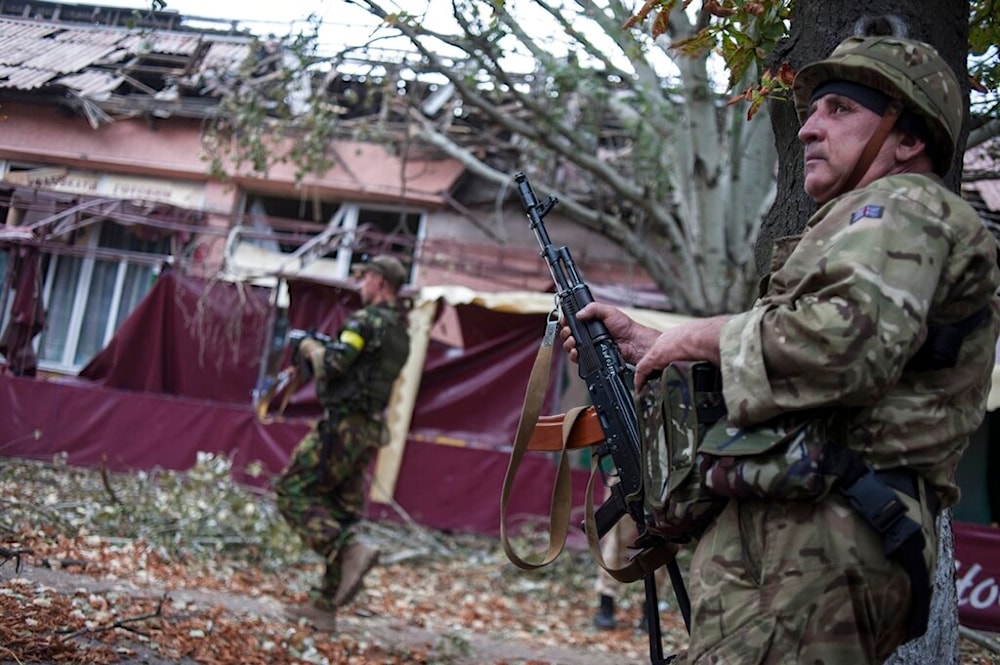Ukraine's defenses in Donbass are collapsing: The Economist
Weeks after Ukrainian forces began advancing towards the Russian region of Kursk, the dynamics of the war have changed, signaling a potential loss of the Donbass territories.
-

Ukrainian government soldiers from battalion "Donbass" search from house to house in the village Mariinka near Donetsk, eastern Ukraine, Monday, Aug. 11, 2014 (AP)
The Economist published an analysis on Friday detailing the current state of the conflict in Donbass, highlighting significant shifts on the battlefield and the mounting challenges faced by Ukrainian forces.
According to the report, Ukraine's defensive lines in Donbass are collapsing as the Russian military continues to make steady gains, particularly near the strategic town of Pokrovsk.
The analysis notes that weeks after Ukrainian forces began advancing towards the Russian region of Kursk, the dynamics of the war have changed.
The once constant roar of machine gun fire has been replaced by the ringing and pain of direct hits from more precise Russian artillery.
Serhiy, an armored vehicle driver in the 80th Brigade, one of the main units leading the offensive in Kursk, told The Economist, "The enemy has gotten wiser. The shooting was frantic in the first few days. Now we are facing professional artillery."
Read more: Ukraine's fight for Donbass driven by resource exploitation: Medvedev
Despite some progress, the pace of Ukraine's advance is slowing, and a new front line, stretching hundreds of kilometers, is beginning to take shape.
The fog of war and Ukrainian operational secrecy mean that detailed information is scarce, but satellite images showing Russian fortifications provide clear evidence of a stabilizing front.
Russian engineering teams have been reinforcing positions around high-value targets, such as the nuclear power plant near Kurchatov, and extending fortifications closer to the new front lines, just 16 km from Ukrainian positions at their closest point.
The report also draws attention to the failure of the Ukrainian operation in Kursk to achieve its major goal of distracting Russian forces from advancing toward Pokrovsk, a vital logistical hub for Ukraine.
Commander-in-Chief of the Ukrainian Armed Forces, Oleksandr Syrskyi, acknowledged on August 27 that Russia has intensified its focus on this strategic location, causing Ukrainian defenses to falter as Russian forces make rapid gains along the main railway line from the east.
Oleksandr, a drone commander in the 110th Brigade, highlighted the effectiveness of Russian surprise tactics, stating, "They hide in the forests, gather forces, and then rush forward."
This swift advance has exposed weaknesses in Ukraine's fortifications, with Russian troops often repurposing Ukrainian trenches and outpacing the number of Ukrainian troops available to maintain defensive lines.
Read more: West must accept Donbass, Crimea as Russian, Blackwater founder says
The analysis finds that Russia's superior resources have played a critical role in their success, with ten engineering regiments compared to Ukraine's one regiment and two brigades.
An officer in one of Ukraine's few engineering units noted that part of the problem is cultural, as "The General Staff simply doesn’t manage the operation, and there is no plan."

 3 Min Read
3 Min Read









